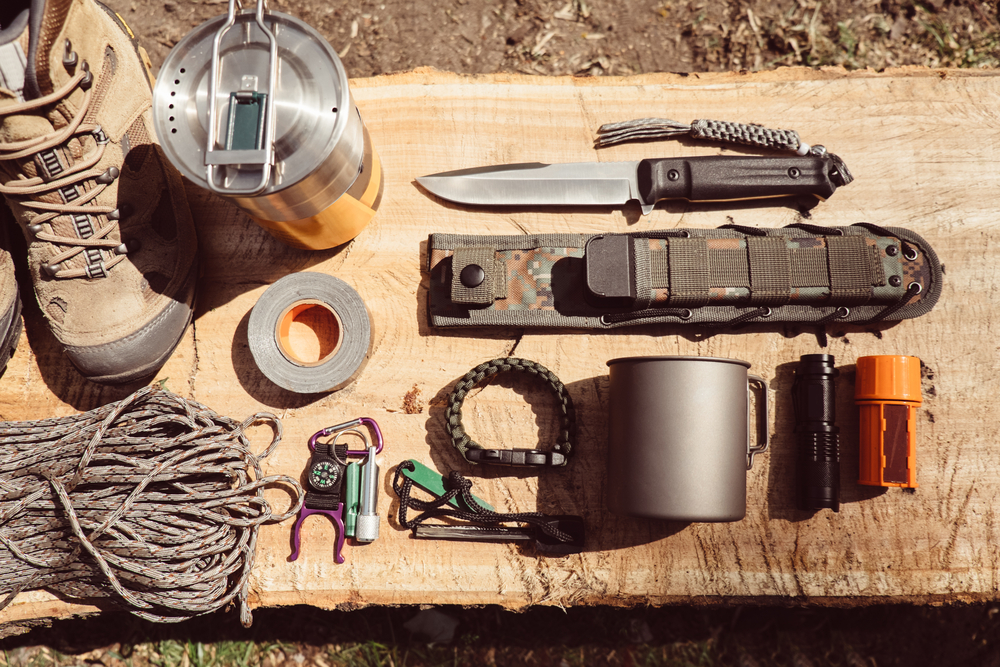There are so many possible scenarios and emergencies that require a tool. Whether one is out hiking for leisure, about to render first aid, or in need of self-defense on the path going home, one tool comes to mind: the survival knife.
Allow us to detail why it is the number one survival tool. That aside, it is just as equally important to find and know your options, such as these survival knives from Japan.
Why the Knife Is the Number One Survival Tool
With its many uses for survival, the knife is undeniably the number one survival tool. It works as a solution for almost every unpredictable situation and can be just the thing you need in a life-and-death scenario.
Its flexibility allows for several vital functions, detailed below.
An All-Around Emergency Tool
In the context of households, knives work as a great emergency tool for almost any kind of task, such as to turn screws, modify clothes, and open boxes and cans.
In terms of other emergencies such as first-aid, it also works best because it can remove any external object that might have entered a wound, for instance. The knife can also be used to tear apart dressings and to make a bandage to cover injuries.
Even if one is not well-versed in medical emergencies, the knife can be used for improvised bandages, too, given that its tip can be sterilized, especially to drain blisters.
On another note, when trails are not easy to travel by and you need to get across safely, a knife can also do a decent job clearing a path for you.
Used To Build Shelter
Another reason that makes a knife the number one survival tool is how it lends itself well to building shelter.
The work of cutting wood, gathering materials from the surroundings, shaping branches, and collecting other bedding materials can be all done with the help of a knife.
To add, part of building a shelter is making a rope, made possible through a knife to cut strips of bark from any tree. Then, weaving smaller stripes to form a rope and tie anything will also need its use.
Digging, another crucial task (and not just for building shelters), can also be done with a knife. In other scenarios like being in the wild, one can build a survival debris hut with a knife, as a makeshift shelter.
Gives Physical and Psychological Boost
The knife also functions as a weapon, so it is excellent for physical defense and psychological boost. For one, any hostile situation that requires rescue can turn out better for you if you have a knife.
You can use your knife to scare the enemy away and defend yourself from animals. With it by your side, it can also give you a psychological edge by giving you more determination and confidence.
The readiness and mental ease a good survival knife gives make it the number one survival tool. After all, it was primarily invented to be a weapon.
That said, if it comes to a point when one needs to skin a prey, the knife does it best. Using the knife as a signaling device can also increase your chances of finding hope and confidence to be rescued by a search team.
Helps in Any Outdoor Activity and Situation
Knives greatly help in hunting food, starting fires, clearing paths, and making tools一all of which are likely outdoor activities or needed for outdoor emergencies.
With a knife, you can multiply the number of weapons you have by making other tools like fish hooks and snares. Quick modifications in any tool are also possible with its use.
When hunting and preparing food, the snares and traps you’ll use to catch prey are done with the knife. It can also function as a spear to help catch fruit from tall spots.
Of course, starting a fire can be done with the help of a knife. Gathering dried leaves, branches, and twigs and striking the knife against a stone will help achieve this feat.
The Bottom Line
There are more reasons why the knife is the top survival tool because you can use it for so many other things beyond those we mentioned above. Still, on top of this information, it pays to know you should consider other factors when buying a survival knife.
Consider having one with a plain edge if it is supposed to be for primary survival. However, a serrated edge can work best for urban environments, especially if one needs to cut synthetic materials. It is best to avoid buying knives with relatively narrow or thin blades, too. These can break easily and might not be good to ensure survival. Find ones with a drop point blade or a decent curved edge.
In terms of handle and size, look for a knife that’s comfortable enough and is made of sturdy material. A good thickness ranges between 3mm and 4 mm and a length ranging from 100mm to 125mm.
Next time you pack your survival kit, the first one you should place is your knife. You will thank yourself for it!
References:
https://collections.nlm.nih.gov/catalog/nlm:nlmuid-9300500A-vid
https://thriveglobal.com/stories/7-ways-to-use-a-survival-knife-in-the-outdoors/
https://knifedge.net/reasons-you-need-survival-knife/
http://maximumsurvival.net/what-makes-a-good-survival-knife/
https://www.selfrelianceoutfitters.com/blogs/survival-blog/10-ways-to-use-a-survival-knife
https://ultimateknifekit.com/reasons-why-knife-is-the-most-important-survival-tool/
https://www.blinklift.com/knife-for-survival/
https://adventure.howstuffworks.com/survival/gear/use-survival-knife.htm
